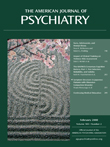Attachment Theory in Clinical Work With Children: Bridging the Gap Between Research and Practice
Attachment Theory in Clinical Work With Children , edited by David Oppenheim and Douglas Goldsmith, is a satisfying meal—in fact, nearly a feast—for clinicians who have been hungering for ways to bring the rich tradition of attachment theory and research into their offices and everyday practices. An outgrowth of a series of symposia begun in 1999, this volume brings together clinical researchers who have been struggling to translate decades of theorizing and empirical studies of attachment theory into direct clinical practice. The editors remind readers that John Bowlby originally put forth his hypotheses regarding the origin of psychopathology in early separations as an alternative to the clinical formulations of his day, to be used therapeutically by clinicians. His theories were rejected by the prevailing clinical culture of that time but were soon adopted by academic psychology. This prompted a cascade of research, originally describing normative attachment patterns and relationships and later expanding to encompass disturbed attachment and relational patterns. As the boundaries of the theory and research stretched to include more pathological forms of attachment, clinicians could see the utility of applying the findings from laboratory studies. But the question was, how?
This volume begins to answer that question. It is comprised of nine chapters, organized into two sections: “Clinical Use of Attachment Research Assessments” and “Attachment Theory and Psychotherapy.” Each chapter is a comprehensive look at a particular approach clinical researchers have used to address specific clinical dilemmas. The complexity and richness of attachment theory and the research it prompted becomes increasingly clear as each chapter focuses on a slightly different aspect of the theory and its implications. Each chapter incorporates case material, often word for word, and the authors add their own clinical thinking on the case, which gives the reader the sense of being in the office with the doctor and patient. For example, Dr. Charles Zeanah describes how his research group extended Dr. Mary Main and colleagues’ work with the Adult Attachment Interview, which focuses on the narrative qualities of a parent’s description of their own attachment history, to develop the Working Model of the Child Interview, which assesses a parent’s perception of their particular child. Zeanah walks the reader through a sample interview using transcripts and provides insight into how the interview is coded and understood by clinicians. Zeanah includes his own commentary to introduce the reader to the clinical utility and functioning of this interview. Dr. Nina Koren-Karie and colleagues explain the importance of the concept of maternal “insightfulness” in attachment theory and describe the Maternal Insightfulness Assessment, their adaptation of this concept. Again, clinical assessment is brought to life with vibrant case examples and actual case transcripts.
Interestingly enough, though not entirely surprising, six of the nine chapters describe techniques for assessing or working with parents and caregivers, despite the title Clinical Work With Children . Oppenheim and colleagues focus on Bowlby’s concept of the process of bereavement—mourning, loss, and resolution—when they explain their use of the Reaction to Diagnosis Interview in understanding how parents come to terms with their child’s diagnosis of autism. Oppenheim et al. show how parents can cope by moving through the process of initial shock and despair to a more balanced perspective. One mother is quoted as saying, “It took us some time, we had to get over the initial shock. At first all we saw was the autism, the child was—autistic! But as time went by we realized that that wasn’t true, he was first of all our child, a wonderful child—he is loving, he is fun.” In one chapter Dr. Arietta Slade vividly describes her work in long-term psychotherapy. In discussing the case of an adult woman whose attachment model she describes as “disorganized/unresolved,” Slade demonstrates the historical and practical dilemma psychoanalytically based therapists encounter when trying to apply attachment theory to their work with adult patients. Slade provides the reader with a tutorial in understanding attachment classification and how she uses it in specific therapeutic encounters with patients. Slade’s vignette of her adult patient who verbally and emotionally terrorizes her young daughter makes the theoretical concept of the “frightened/frightening” mother distressingly real.
The chapters focusing on therapeutic work with children are equally vivid and informative. Drs. Busch and Lieberman challenge readers to view children who are exposed to family violence through the “dual lenses” of trauma theory and attachment theory. Goldsmith describes a paradigm which “challenges children’s negative working models” and is used at a therapeutic preschool for maltreated children. He demonstrates how staff work to give the children a sense of a “secure-base” by using simple but powerful interventions designed to show the children that they are kept in mind. Goldsmith tells readers that the key is for the caregiver to act as an “ideal grandmother,” providing unconditional acceptance and knowing the child so well that she/he is capable of anticipating the child’s needs without the child even having to verbalize them. The preschool staff do this by both anticipating and explaining; in one example the therapist simply says, “You look hungry, Amy, so I brought you some crackers.” This interaction occurs dozens of times over dozens of days and begins to counteract the children’s previous perception of caregivers as insensitive, uncaring, and unloving—demonstrating that these simple words and actions have powerful effects.
Finally, the book covers a variety of settings and clients: biological parents and their children, adoptive parents and their children, foster parents and their children, children in therapeutic preschools, and children and parents participating in Head Start programs. Each chapter gives the reader the theoretical background to understand the assessment or intervention and enough actual case material to determine if the specific technique could prove useful in their own clinical practice. In sum, a complete and filling repast.



